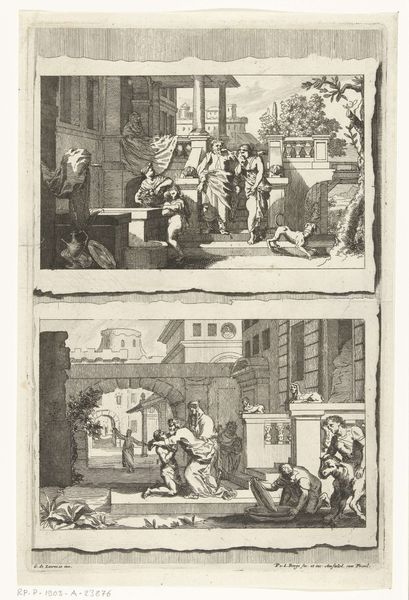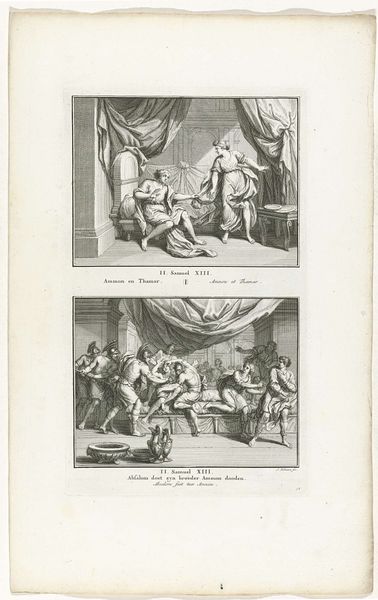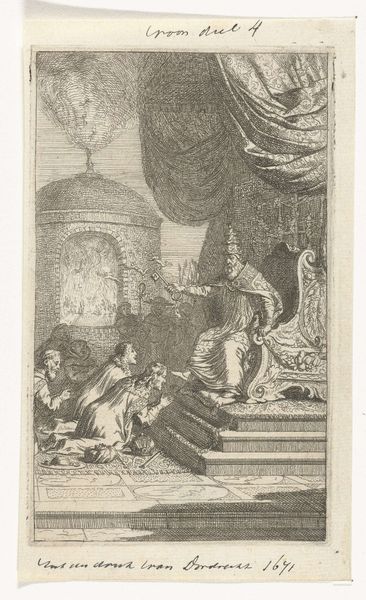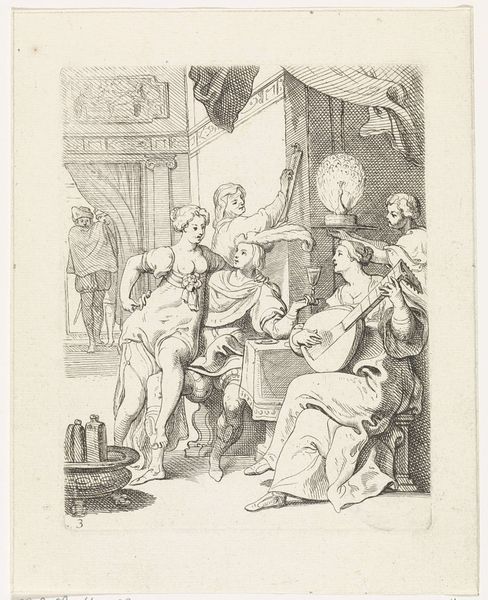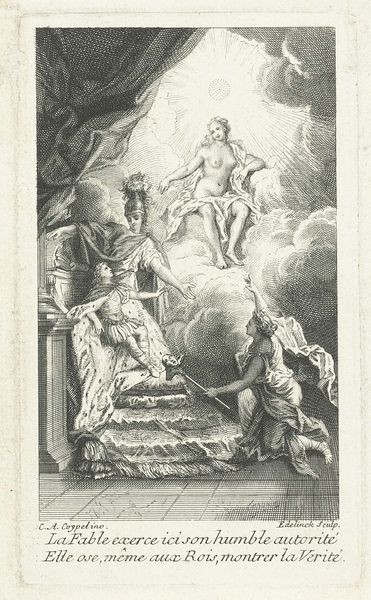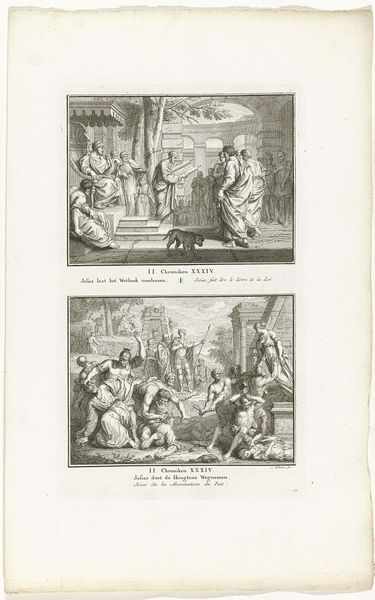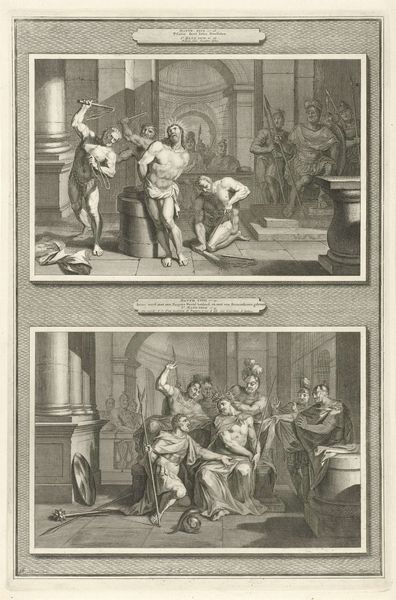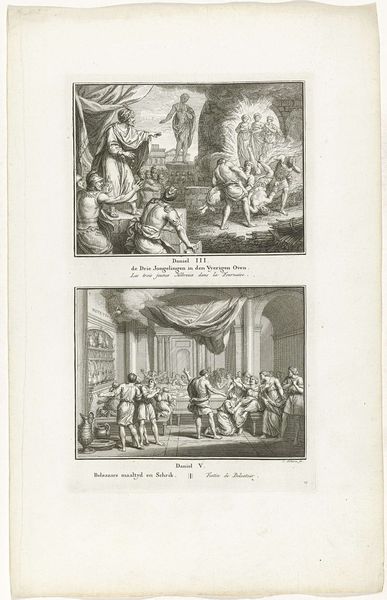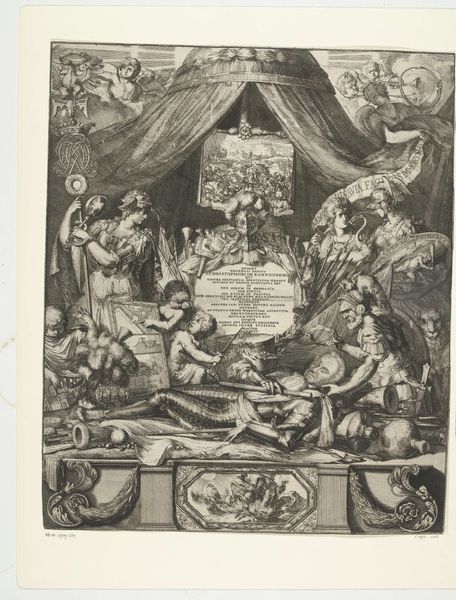
print, engraving
#
baroque
# print
#
figuration
#
history-painting
#
engraving
Dimensions: height 255 mm, width 173 mm
Copyright: Rijks Museum: Open Domain
Curator: This print, housed here at the Rijksmuseum, is called "Man zittend in een kamer en opening van het graf," dating from between 1694 and 1737, and is credited to Pieter van den Berge. Editor: It feels weighty somehow, like two distinct moments frozen in a muted palette. Is that tearing around the edges intentional? Curator: It imitates the look of a ripped page from a book of patterns. The artist is engaging with established history painting while using reproducible engraving methods. This allows broader consumption but also nods to the commercial book trade. Editor: I see. The imagery itself feels layered. Up top, there's this classical figure—maybe a scholar or a philosopher—and then this second scene seems to descend, literally, into darkness and what I can only presume is an opened grave. What do they have in common? Curator: Consider the setting. The upper scene, draped in luxurious fabric, suggests the authority of knowledge, while below we confront the physical, mortal world. The torch suggests a guiding principle or illumination--hope in darkness? Editor: Right. We are asked to interpret hope for rebirth in Christian narratives. The subjects show a moment of physical crisis that points toward a future narrative or a release. We’re given visual shorthand for understanding the story by following established conventions. Curator: Engraving certainly lends itself to replication, yet it's through those deliberate lines that the narrative unfolds. It creates the potential for many copies to share common images with subtle variations. Editor: These common stories give order to an otherwise frightening material world. I like how this print visualizes a familiar story, a set of memories, if you will, in a way that reflects its own methods of production.
Comments
No comments
Be the first to comment and join the conversation on the ultimate creative platform.
